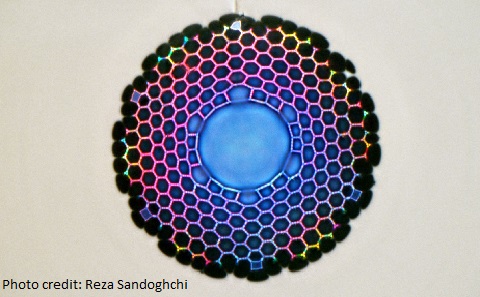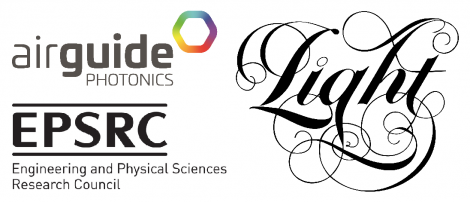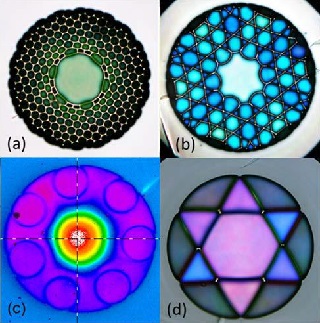
Development
Our core activity aims to design, develop, fabricate and supply the next generation of ultrahigh performance HCFs

Currently, fibre optics technology is limited largely to the fact that the light is confined to a solid glass core, which places fundamental restrictions on the power and wavelength range over which signals can be transmitted, the speed at which signals propagate, and its sensitivity to the external environment.
Our Airguide Photonics research programme aims to reinvent fibre optics technology and will replace the glass core with air or vacuum to produce Optical Fibres 2.0, offering vastly superior but largely unexplored potential.
Our research challenge comprises six highly inter-related projects, representing a mix of fundamental research and applied engineering.

Our core activity aims to design, develop, fabricate and supply the next generation of ultrahigh performance HCFs

Looking at key practical and reliability aspects associated with the deployment of HCFs in real-world applications

Developing a suite of amplifiers compatible with the enormous operation bandwidth offered by HCFs

Exploiting the unique properties of HCFs for data transmission applications

Exploiting the unique optical power handling properties of HCFs across a variety of applications

Working with industrial and academic partners, and the UK National Physical Laboratory to exploit long gas/light interactions
The overall aim of the Airguide Photonics programme is to explore the performance limits of hollow core fibres, to develop innovative means of manufacturing preforms, to develop ways to reliably interconnect to conventional fibres and devices, to develop industry application-specific fibres, to engage with partners worldwide, and to demonstrate real-world applications.
The Airguide Photonics programme will place the UK at the very forefront of a whole new era in fibre optics.
Find out more
The fundamental properties and potential benefits of HCF have been demonstrated in a wide range of experiments over the years. Whilst the earliest demonstrations of HCFs date back nearly two decades to the first hollow core bandgap fibres (HC-PBGFs), and still earlier for metal-coated capillary waveguides, it is only in very recent times that fibres of sufficiently low loss, wide bandwidth, structural uniformity and length have become available to address many of the most compelling applications.
Airguide Photonics will initially focus on photonic bandgap and anti-resonant HCF types (see Figure 1), because they are the most technologically mature and the closest to making a big impact in well-identified areas of interest to our supporters.
As the project evolves, we will look to develop more radical geometries, with the aim of revolutionising entire application areas.
Our aim is to build on fabrication techniques and know-how developed on the HyperHighway programme grant, and translate HCFs from their status as something of a scientific curiosity to a practical deployable technology that can be used to greatly extend the parametric operating regimes of optical fibres.
In doing this, we will demonstrate a host of new and improved fibre optic applications, either working with resources internal to the project in areas where we are internationally competitive or leading, or in partnerships with our 20+ partners from the best British/international Companies and Academic Units.
By addressing these research challenges, we will also train a future generation of world-class scientists, engineers and technologists in the new technology and, through supply of fibre with unprecedented properties, will help maintain the health of adjacent scientific disciplines.